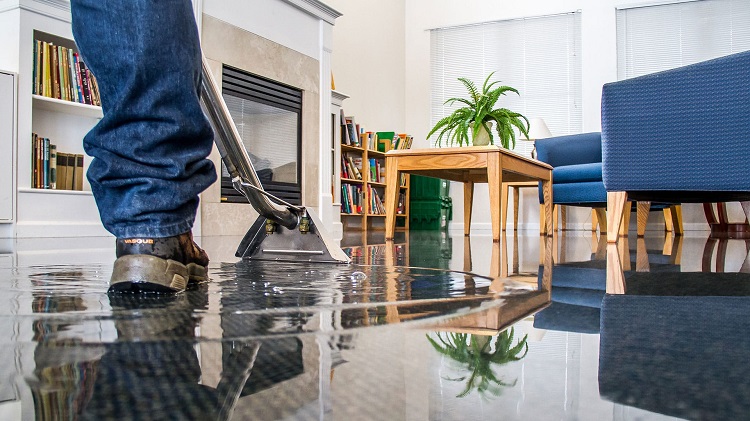
Water damage can strike unexpectedly, whether from burst pipes, severe storms, or hidden leaks. When it does, quick and efficient action is critical to prevent lasting damage. This is where water mitigation services come in, offering professional solutions to contain, repair, and restore properties affected by water damage. For homeowners unfamiliar with these services, understanding what to expect during the process can be reassuring and allow them to make informed decisions.
Table of Contents
Rapid Assessment And Planning
A thorough examination of the damage is the first thing that happens when a water mitigation provider shows up on the scene. Professionals will identify the water source, assess the extent of the damage, and consider potential safety hazards, like exposed electrical components, or compromised structural elements. By examining affected areas in detail, including walls, floors, and ceilings, the team can develop a targeted plan for mitigation and restoration. In order to find concealed moisture and water pockets in walls or floors, they might also employ sophisticated equipment like moisture meters and infrared cameras during this evaluation.
After assessing the damage, the team will communicate their findings with the homeowner, outlining the steps they plan to take. This clarity helps set expectations, including an estimated timeline and potential costs, so homeowners can understand the scope of work and feel assured about the process.
Containing The Damage
Containing water damage is crucial to prevent it from spreading further into the property. This step typically involves isolating affected areas by closing off rooms or sealing damaged sections. Professionals may use heavy-duty barriers, plastic sheeting, and industrial-grade drying equipment to contain the water and prevent further exposure. By controlling the environment, they can minimize the impact on other parts of the property, helping to preserve any undamaged areas. In some cases, containment may include switching off the main water supply, particularly if the damaged source is from plumbing.
In order to halt the damage in its tracks and create a safer atmosphere for the homeowner and the restoration crew, this first containment step is essential.
Water Extraction And Drying
Once the damage is contained, the water mitigation team will focus on extracting standing water from the property. Using high-powered pumps, wet vacuums, and industrial-grade fans, they remove as much water as possible from floors, carpets, and other surfaces. This swift extraction process is essential because standing water can rapidly lead to mold growth, wood rot, and structural weakening.
After the visible water is removed, thorough drying begins. This phase is essential to eliminate hidden moisture that could lead to mold and mildew if left untreated. Professionals use advanced drying equipment like air movers and dehumidifiers to remove moisture trapped within materials. By circulating air and controlling humidity levels, they ensure that every inch of the affected area is adequately dried.
Cleaning And Sanitization
Water damage can lead to bacterial contamination, especially if the water source is from a sewage backup or floodwaters. To protect against harmful pathogens and allergens, water mitigation teams perform thorough cleaning and sanitization after extraction and drying. This step often includes disinfecting surfaces, deodorizing rooms, and removing any unsalvageable materials like carpeting or drywall that may harbor contaminants. The cleaning process helps restore a safe and healthy environment, reducing potential health risks for residents.
Preventive Measures And Restoration
Once the cleaning is complete, the water mitigation team assesses if there’s any need for structural repairs. In many cases, water damage can weaken structural elements, and certain materials may need replacing. This can include drywall, insulation, flooring, or even wooden beams, depending on the damage’s severity.
In addition to addressing immediate repairs, some water mitigation services also offer preventive solutions. This may include recommending adjustments to landscaping, waterproofing foundations, or installing sump pumps to help avoid future water damage. Although not every company provides these preventive measures, those that do can help homeowners feel more prepared against future water-related incidents.
Communication And Follow-Up
Throughout the process, reliable water mitigation professionals prioritize clear communication with homeowners. They update homeowners at each stage, from the initial assessment to the final cleaning, providing insights into the timeline and addressing any questions. In some cases, follow-up visits may be arranged to ensure that all affected areas remain dry and free from any signs of mold or mildew.
Final Thoughts
Water mitigation is more than just drying out a property; it’s about restoring a home to a safe, livable condition. A professional water mitigation service offers comprehensive solutions to tackle every stage of water damage, from rapid assessment to final cleanup. Understanding what to anticipate as a homeowner can reduce anxiety and make the process easier to handle. These services offer peace of mind and priceless future protection by treating the obvious and obscure effects of water damage, guaranteeing that your house will continue to be a secure and healthy place for many years to come.

